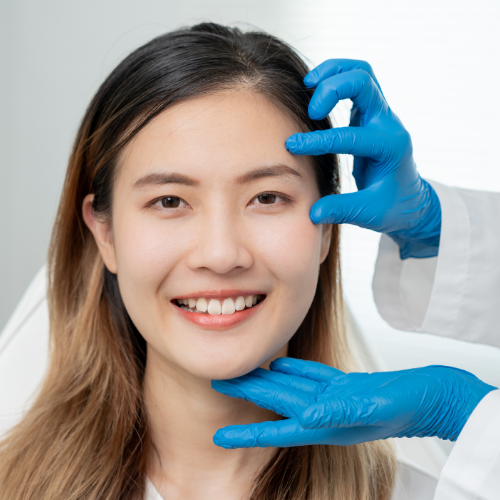Eyelid Aesthetics

What is Eyelid Aesthetics?
Eyelid Aesthetics, also known as blepharoplasty, is a cosmetic surgical procedure focused on rejuvenating the appearance of the eyelids. This procedure can address various eyelid concerns, including sagging skin, wrinkles, puffiness, and fat deposits. Eyelid Aesthetics aims to create a more youthful, refreshed, and alert look by removing excess tissue and enhancing the contours around the eyes. It is sought after for its ability to improve both aesthetic concerns and vision obstruction caused by drooping eyelids.
What is Eyelid Aesthetics Types?
Eyelid Aesthetics includes different types:
Upper Eyelid Surgery, also known as upper blepharoplasty, is a cosmetic procedure specifically designed to address issues in the upper eyelids. Over time, the upper eyelids can become burdened with excess skin, fat deposits, and weakened muscles, causing drooping or hooding of the eyelids. This condition not only affects aesthetics but can also obstruct vision in severe cases. The surgical approach involves carefully excising excess tissue, repositioning fat deposits, and tightening muscles if needed. The result is a more refreshed and alert appearance, with improved vision in cases of visual obstruction.
Lower Eyelid Surgery, or lower blepharoplasty, targets concerns in the lower eyelid area. Common issues include the development of under-eye bags, puffiness, fine lines, and wrinkles. These aging signs can contribute to a tired or aged appearance. The surgical technique for lower eyelid aesthetics typically involves the removal or repositioning of excess fat, the tightening of sagging skin, and, in some cases, the addition of structural support to create a smoother and more youthful lower eye area. This procedure aims to rejuvenate the eyes and reduce the visible signs of aging.
Double Eyelid Surgery, also referred to as Asian eyelid surgery, is a specialized procedure for individuals who wish to create a double eyelid fold. Many Asian individuals naturally have a single eyelid without a distinct crease. Double Eyelid Surgery involves the creation of an upper eyelid crease to achieve a double eyelid appearance. The surgical technique can vary based on the individual’s anatomy and desired outcome. This procedure enhances the eyes’ definition and is sought after for its ability to create a more prominent eyelid contour, often perceived as aesthetically desirable.
These types of Eyelid Aesthetics procedures cater to different concerns and goals, allowing individuals to address specific issues related to their upper and lower eyelids or achieve a desired eyelid appearance.
What are the Eyelid Aesthetic Surgery Techniques?
Eyelid Aesthetic surgery techniques include:
Incisional Blepharoplasty: This method involves making precise incisions along the eyelid creases or lash lines to access and remove excess tissue.
Non-Incisional Blepharoplasty: Non-incisional techniques are less invasive and typically use sutures to reshape the eyelids without external scarring.
What is the Pre-Operative Process for Eyelid Aesthetics?
Preparing for Eyelid Aesthetics involves several key steps:
Consultation: Patients consult with a board-certified plastic surgeon to discuss goals, assess eyelid concerns, and create a personalized treatment plan.
Medical Evaluation: A comprehensive medical history and physical examination are conducted to ensure the patient’s suitability for surgery.
Surgical Plan: The surgeon outlines the specific surgical approach, discusses expected outcomes, and addresses any questions or concerns.
Preoperative Instructions: Patients receive instructions on medication, alcohol, smoking cessation, and dietary restrictions leading up to the procedure.
Informed Consent: Patients review and sign informed consent forms, acknowledging their understanding of the procedure’s risks and benefits.
What is the Post-Operative Process for Eyelid Aesthetics?
Following Eyelid Aesthetics, patients can expect the following:
Immediate Recovery: Patients spend time in a recovery area for monitoring and pain management.
Swelling and Bruising: Swelling and bruising are common initially but gradually subside.
Diet and Medication: A soft diet and prescribed medications help with comfort and healing.
Follow-Up Appointments: Multiple follow-up appointments with the surgeon monitor progress and address any concerns.
Resuming Normal Activities: Patients can gradually resume normal activities as advised by the surgeon, with complete recovery taking time.





